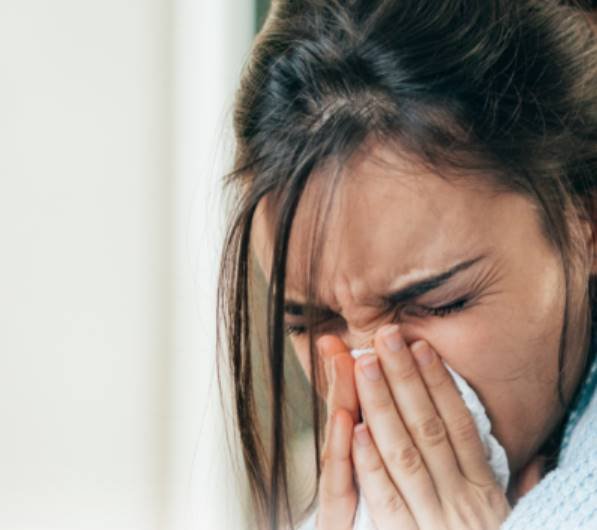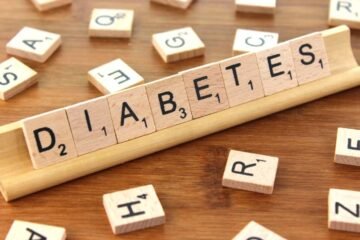Mold toxicity, also known as mold illness, can have a serious impact on your health if left unaddressed. Exposure to toxic mold can cause symptoms ranging from allergies and respiratory problems to neurological issues. In this blog, we will be discussing the 10 warning signs of mold toxicity that you should look out for.
From persistent coughs to joint pain, understanding these symptoms can help you take action before it’s too late. We will also be sharing tips on how to detoxify your body after mold exposure, including natural remedies and avoiding certain foods. Lastly, we will talk about neutralizing mold in your environment to prevent further exposure. Don’t wait until it’s too late – read on to learn more about mold toxicity and what you can do to protect yourself.
What is Mold Toxicity?
Mold toxicity is a condition resulting from exposure to harmful mold spores that may cause symptoms such as fatigue, headaches, and respiratory problems. Prolonged exposure can lead to severe health problems like neurological damage and cancer. Proper identification and removal of mold remediation from the environment are crucial in treating this condition.

Recognizing the 10 Warning Signs
Recognizing the warning signs of mold toxicity is crucial to prevent health issues. Symptoms include fatigue, respiratory problems, skin irritations, and gastrointestinal distress. Neurological symptoms such as tremors or seizures and respiratory concerns like coughing or wheezing are also common. Act fast by seeking medical attention if necessary.
Persistent Cough
Mold exposure can lead to respiratory symptoms, including chest tightness, shortness of breath, and a persistent cough. Inhaling mold spores can cause lung inflammation. Seek medical attention if these symptoms persist. Prevent future mold-related health issues by taking measures to prevent mold growth in your home.
Headaches
Persistent headaches caused by mold toxins can range from mild to severe and may not respond to traditional headache remedies. Those who are prone to migraines should be aware that mold toxins can trigger migraines. It is important to consider the possibility of mold toxicity as a potential cause when experiencing frequent unexplained headaches accompanied by other symptoms like nausea and dizziness.
Fatigue
Mold poisoning can cause persistent tiredness, migraines, and memory loss. Those with a weakened immune system are more susceptible to mold’s mycotoxins, which affect the respiratory system. If you experience these symptoms or feel exhausted often, it’s crucial to see a doctor. Preventing mold growth at home can also prevent exposure to toxic molds and health issues like diarrhea, vomiting, and abdominal pain.
Skin Rashes
Mold toxicity can cause skin rashes that appear as red, itchy patches on the skin, also known as hives. These rashes may not respond to traditional treatments and could require specialized medical attention. Apart from skin rashes, there are other warning signs of mold toxicity like respiratory problems and headaches that should not be ignored. It is important to take immediate action against any signs of black mold or prolonged exposure to mold spores for better health.
Sinus Congestion
Mold exposure can inflame sinuses and cause respiratory issues, headaches, and fatigue. Seeking medical attention is crucial for diagnosis and treatment. Control humidity levels and address water damage promptly to prevent sinus congestion. Take care when cleaning up toxic molds like stachybotrys to avoid weakened immune systems.
Watery Eyes
If you’re experiencing watery eyes, blurry vision, sensitivity to light or eye infections, it may be worth checking for mold growth. Mold spores can cause inflammation leading to excessive tearing and redness affecting ocular health. Eye problems are one among the many health issues associated with prolonged exposure to toxic mold. Seek medical attention promptly if such symptoms appear.
Difficulty Concentrating
If you’re experiencing difficulty concentrating or experiencing brain fog or memory problems along with other signs of black mold exposure such as headaches or respiratory issues seek medical attention for potential mold toxicity. Mold toxins can cause inflammation and damage to the central nervous system leading to cognitive impairment. Addressing any possible exposure promptly is crucial in avoiding further health complications related to weak immune system.
Mood Swings
Mold toxicity can cause emotional and physical symptoms such as mood swings, fatigue, headaches, and respiratory issues. Seeking medical attention is crucial to address the source of indoor mold exposure, which can lead to irritability, aggression, and changes in behavior. Don’t overlook these warning signs as they can have serious consequences on your health.
Joint Pain
If you experience joint pain, it could be a sign of mold toxicity caused by prolonged exposure to mold spores that trigger inflammation in the body. Other symptoms that may accompany joint pain include fatigue, headaches, respiratory issues, skin rashes, nausea or diarrhea. In addition to seeking medical attention and addressing any underlying mold issues in your home or workplace, prevention measures such as proper ventilation and humidity control can help reduce the risk of mold growth.
Respiratory Problems
Mold exposure can cause respiratory problems and inflammation in the lungs. Symptoms include wheezing, coughing, and shortness of breath. Immunocompromised individuals and those with respiratory disorders are at higher risk of developing pneumonia or infections due to mold toxicity. Seeking medical attention is crucial if you experience respiratory issues. Drywall can harbor mold growth, so addressing water damage or moisture issues quickly is important to prevent mold growth.
How to Detoxify After Mold Exposure?
After experiencing prolonged exposure to fungi like mold spores or mycotoxins due to water damage or leaks in your home or workplace can lead to severe health issues. Remediation is necessary to prevent any allergic reactions or respiratory issues like congestion or shortness of breath. If you suspect any warning signs of black mold such as persistent coughing or watery eyes along with abdominal pain or vertigo- seek medical attention. Address moisture levels outside a healthy range as well as humidity levels indoors to avoid future growths.
Avoiding Mold and Yeast-Prone Foods
To minimize health issues related to mold exposure, you need to avoid certain foods. Cheese, mushrooms, and bread are examples of mold and yeast-prone foods that can aggravate the signs of black mold poisoning. Similarly, sugar-rich meals and processed food items should be taken out of your diet plan altogether. Instead, go for vitamin-rich diets consisting of leafy greens and lean protein sources that can boost your immune system naturally. Additionally, some supplements like probiotics can aid detoxification effectively.
The Benefits of Garlic to Combat Mold Toxicity
Incorporating garlic into your diet or taking garlic supplements can be a helpful addition to your detoxification regimen. Garlic is a natural antifungal and antibacterial agent that contains compounds like allicin, which inhibits the growth of mold and other harmful microorganisms. Additionally, garlic has antioxidant properties that reduce inflammation and oxidative stress caused by prolonged exposure to mold spores. Remember, it’s essential to consult with a healthcare professional before starting any new supplement or dietary changes.
Conclusion
Mold toxicity can cause adverse health effects, so it is crucial to recognize the warning signs. These include respiratory problems, skin rashes, and joint pain. If you suspect mold toxicity, detoxifying your body from mold exposure is essential. This involves avoiding mold and yeast-prone foods, incorporating garlic into your diet, and steering clear of sugars and refined carbohydrates. Additionally, neutralizing mold in your environment is necessary to prevent further exposure. You can ensure a healthy living environment by following these steps and seeking professional help if needed. To learn more about mold toxicity and how to detoxify after exposure, check out our blog on the topic.
Frequently Asked Questions
What are the first signs of mold poisoning?
Mold toxicity symptoms vary, but fatigue, headaches, and allergies are common early signals. Respiratory problems may also occur. If left untreated, more severe symptoms such as neurological and digestive issues can develop. It is crucial to seek medical attention immediately upon suspicion of mold toxicity.
What are the symptoms of mold exposure?
Mold exposure symptoms may differ based on the person and type of mold present. Typical symptoms include respiratory problems, allergies, fatigue, headaches, and skin irritation. It’s crucial to seek medical attention if you suspect mold exposure to identify the root cause of your symptoms.
How dangerous is living with black mold?
Living with black mold can be extremely hazardous to one’s health, causing respiratory problems, allergies, and other complications. It is vital to have it professionally removed as ignoring the signs can result in long-term health issues.
When should I seek medical attention if I suspect mold toxicity?
If you have symptoms like headaches, fatigue, or respiratory issues that persist, seek medical attention for mold toxicity. Have your home or workplace tested and remediated by a specialist if you suspect mold. Some people are more sensitive than others and may need medical attention sooner. Addressing mold toxicity promptly can prevent further health complications.


















